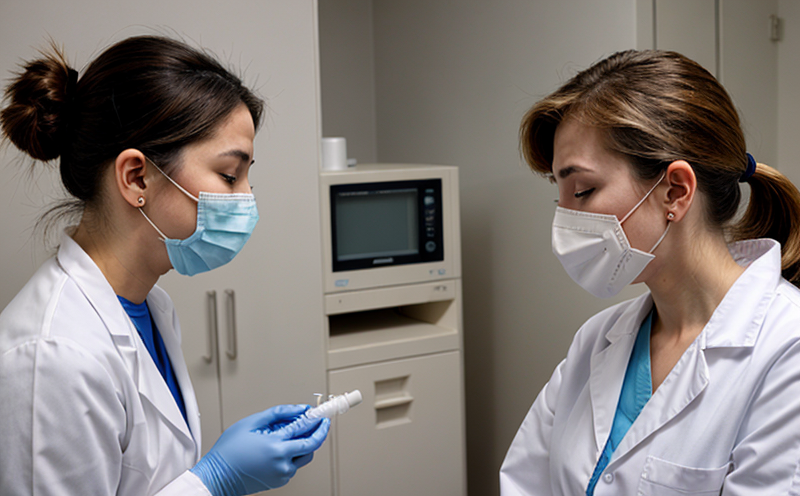Flow Cytometry Testing for Animal Immune Response
In clinical and healthcare testing, particularly within the realm of allergy and immunology, understanding the immune response in animals is crucial. Flow cytometry provides a robust method to study this intricate process by examining individual cells as they pass one-by-one through a laser beam. This technique allows for precise measurement of multiple parameters such as cell size, granularity, and fluorescence intensity, which are indicative of different antigens or antibodies present in the animal’s immune system.
The flow cytometer works by exciting fluorescent dyes attached to specific markers on the cells. These markers can be antibodies that target proteins unique to certain immune cells like T-cells, B-cells, or mast cells. By analyzing these parameters, researchers and clinicians gain insights into how an animal’s immune system is responding to various stimuli such as allergens, pathogens, or vaccines.
The use of flow cytometry in animal testing has several advantages over traditional methods. It can provide a high throughput analysis allowing for the simultaneous measurement of multiple markers on thousands of cells per second. This makes it particularly useful in large-scale studies where detailed immune profiling is required. Additionally, this technique offers greater specificity and sensitivity compared to other methods like ELISA or Western blotting.
One critical aspect of flow cytometry testing involves proper specimen preparation. Blood samples are typically collected from animals under strict aseptic conditions to avoid contamination which could skew results. The blood is then processed into single-cell suspensions before being stained with fluorescent antibodies targeting specific antigens or receptors on the cells’ surface.
The instrumentation used in flow cytometry testing includes specialized machines that can detect very low levels of fluorescence from individual cells passing through a focused laser beam. These systems are capable of sorting live cells based on their characteristics, allowing for isolation of particular cell populations like allergen-specific T-helper cells or mast cells involved in hypersensitivity reactions.
A notable real-world application of flow cytometry testing lies in assessing the efficacy of new treatments aimed at modulating immune responses in animals suffering from allergies. For instance, researchers might use this technique to monitor changes in the composition and function of lymphocyte subpopulations before and after administering antihistamines or immunosuppressive drugs.
Another significant area where flow cytometry plays a vital role is in diagnosing and monitoring autoimmune diseases such as rheumatoid arthritis or systemic lupus erythematosus. By examining the presence and activity of various immune cell types, clinicians can better understand disease progression and tailor therapeutic interventions accordingly.
- Benefits:
- - High throughput analysis
- - Greater specificity and sensitivity
- - Ability to sort live cells based on their characteristics
- - Useful in large-scale studies requiring detailed immune profiling
Why It Matters
Understanding the mechanisms behind allergic reactions and immune responses is essential for developing effective treatments and preventive measures. Flow cytometry testing helps bridge this gap by providing detailed insights into these complex processes at both the cellular and molecular levels.
For instance, in veterinary settings, accurate diagnosis of allergies or autoimmune disorders can significantly improve patient care. By identifying specific allergens responsible for triggering an immune response, veterinarians can implement personalized treatment plans that minimize side effects while maximizing therapeutic benefits.
The significance of flow cytometry extends beyond clinical applications into basic research aimed at unraveling the mysteries of immunology itself. Researchers studying evolutionary aspects of immunity across different species may employ this technology to compare patterns observed in various animal models against those found in humans.
- Quality and Reliability Assurance:
- - Rigorous calibration procedures
- - Regular maintenance schedules for instruments
- - Standard operating procedures (SOPs) ensuring consistency across experiments
- - Independent validation by peers or third-party labs





